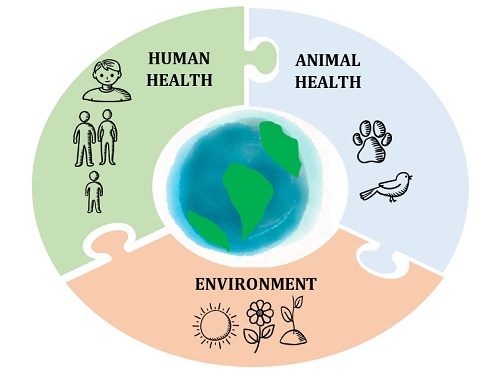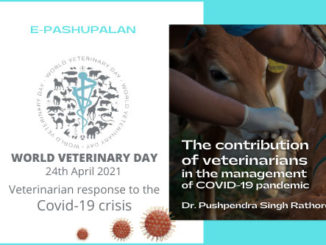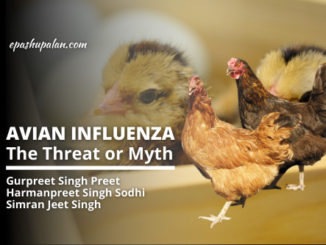The novel coronavirus pandemic has changed human life more rapidly than years of civilization could. The outbreak originated in the city of Wuhan, China and gradually gripped the whole world. The SARS-COV-2 virus has struck the mankind worse than the Black Death, or the seven cholera pandemics that have wreaked havoc in the past. The novel coronavirus has been sequenced, and it is supposed be zoonotic in nature; originating from flying mammals like bats, spreading to humans. The intermediate host is yet to be identified.
The coronaviruses have been prevalent in the animal kingdom for a long time, most commonly infecting new-born puppies under one month of age, causing respiratory and digestive disturbances. The veterinary community had identified, treated and developed a vaccine against coronavirus which infected puppies, and is an integral part of the general vaccination schedule in dogs. Little did we know that the virus is evolving, and will gradually spillover in mankind from different species. While the veterinary community and public health sector is well acquainted with the concept of One Health, the zoonotic nature of coronavirus pandemic has elevated the need to integrate this approach in prevention of emerging diseases manifold. 75% of the newer emerging human infectious diseases originate from animals (UNEP, 2016). One Health concept was brought into light in early 2000s. The concept in a nutshell states that human health and animal health are not only inter-dependent, but also rely on the environment they flourish in (OIE, 2020).

The One Health approach is multi-disciplinary and requires collaborative endeavors at all levels, beginning right from grassroots to the global scenario, to combinedly and holistically improve the health and hygiene status of people, animals and environment. It explains the linkage between prevailing ailments like SARS COV-2 (Severe Acute Respiratory Syndrome) in humans, and H5N1 (Swine Influenza) in swine. The pig has been rightly termed as a mixing vessel for many viruses in veterinary terminology, specially influenza viruses, that infect multiple species like fowl, swine and humans due to the continuously-evolving nature of influenza viruses and physiological similarities of pigs with humans. The one health approach is the ideal concept that can explain such phenomena and help to devise preventive measures against them.
Veterinary Services, play a pivotal role in the mitigation and minimizing of animal health hazards, while simultaneously augmenting public health and nutritional status by improving the quality of animal products viz., meat and milk. Consequently, neither veterinary nor human health sector can flourish as separate entities, they need to be able to communicate and collaborate with each other to make decisions suited for both the sectors. Hence, if animal diseases are kept under check, mankind and the environment are also benefitted.
The invention of the coronavirus vaccine by a team of scientists headed by a veterinarian, is a proud achievement for the veterinary community during this global health crisis. This serves as a stimulant for aspiring veterinarians that their unfeigned efforts may prove beneficial not just for the animals, but the ecosystem and all its components as a whole. In the initial days of the pandemic, when there was a scarcity of RT-PCR analysers for testing swab samples in the country, several veterinary laboratories offered to perform the needful; the centre for zoonoses at Nagpur Veterinary College, and National Dairy Research Institute, to name a few. Many veterinarians worked as frontline workers in states where the number of active cases sore much higher than medical and health workers could tackle. Hence, it is appropriate to say that veterinarians have played a distinguished role in the COVID-19 pandemic, and an alliance between medical and veterinary sector is the only resolution to prevent the advent of such spillovers. As a veterinarian, some suggested measures to prevent newer emerging viruses and integrating one-health concept in disease prevention and management are:
- Building a protocol to perform a life-cycle assessment and understand the transmission cycles of the novel coronavirus, in order to mitigate future risk conditions in the context of mutating SARS-COV and other emerging zoonotic diseases.
- Efforts for identification of the intermediate host of the novel coronavirus might be fruitful in breaching the life cycle of the virus and curb its zoonotic propagation.
- Development of more animal health research centres like National Institute of High Security Animal Diseases (NIHSAD, Bhopal) and strengthening of government-funded projects in their favor.
- Rehabilitation of the natural habitat of wild animals and their in-situ conservation, is the need of the hour; to protect the vivid biodiversity maintaining the ecological balance of nature, and also to minimize their contact with human beings and domesticated animals.
- Strict biosecurity measures and proper waste/ effluent disposal at slaughterhouses, with no unauthorized human contact.
- Awareness campaigns regarding the importance of animal-based protein in the diet, and the correct methods of handling and cooking them. At the same time, consumption of wild animals, carnivores, undomesticated animals should be discouraged.
- Strict vigilance and bio surveillance of animal trade fairs, live animal markets, animals being transported and pet shows. Cross-country animal trade should be suspended till the pandemic peak flattens; and should be strictly scrutinized when resumed.
- Extended one-health approach: Including socio-economic and ecological determinants in the prevention of spread of zoonotic diseases.
- Following strict biosecurity measures at poultry and swine farms, with no access to unauthorized visitors.
- Proper and scientific biomedical waste disposal like used cotton swabs, bandages to avoid scavenging by stray animals.
- Keeping stray animals away from pig and poultry farms to prevent them from feeding and/or littering in the premises.
- Strengthening diagnostic protocols and equipment in veterinary polyclinics/hospitals to diagnose, identify and treat infectious diseases at the earliest, minimising the chances of the spread of infection to other animals/ humans.
- Proper disposal of animal litter. Using it to produce manure is a better alternative than disposing it in water bodies, which gives rise to eutrophication and contaminates drinking water with unknown microbes, due to its high nitrogenous content.
- Pet owners should be well briefed by their vet about their responsibilities to maintain the animal’s hygiene, vaccination schedule and its significance for their own family.
- Integrated lab trials in humans and animals, especially pets; for the identification of incidences of co-morbidity for coronaviruses, in order to pinpoint the probability of mutation and co-evaluation among viruses infecting different species.
Conclusion
With newer emerging viruses on the rise, the need to adopt and follow one-health approach globally is increasing several-fold. The synergistic and collaborative efforts of the medical and veterinary sector can prove effective in preventing the emergence and spread of zoonotic diseases.
“Human or livestock or wildlife health cannot be discussed in isolation anymore. There is just one health.”~ Washington Post on Ebola HF, 2003







Be the first to comment